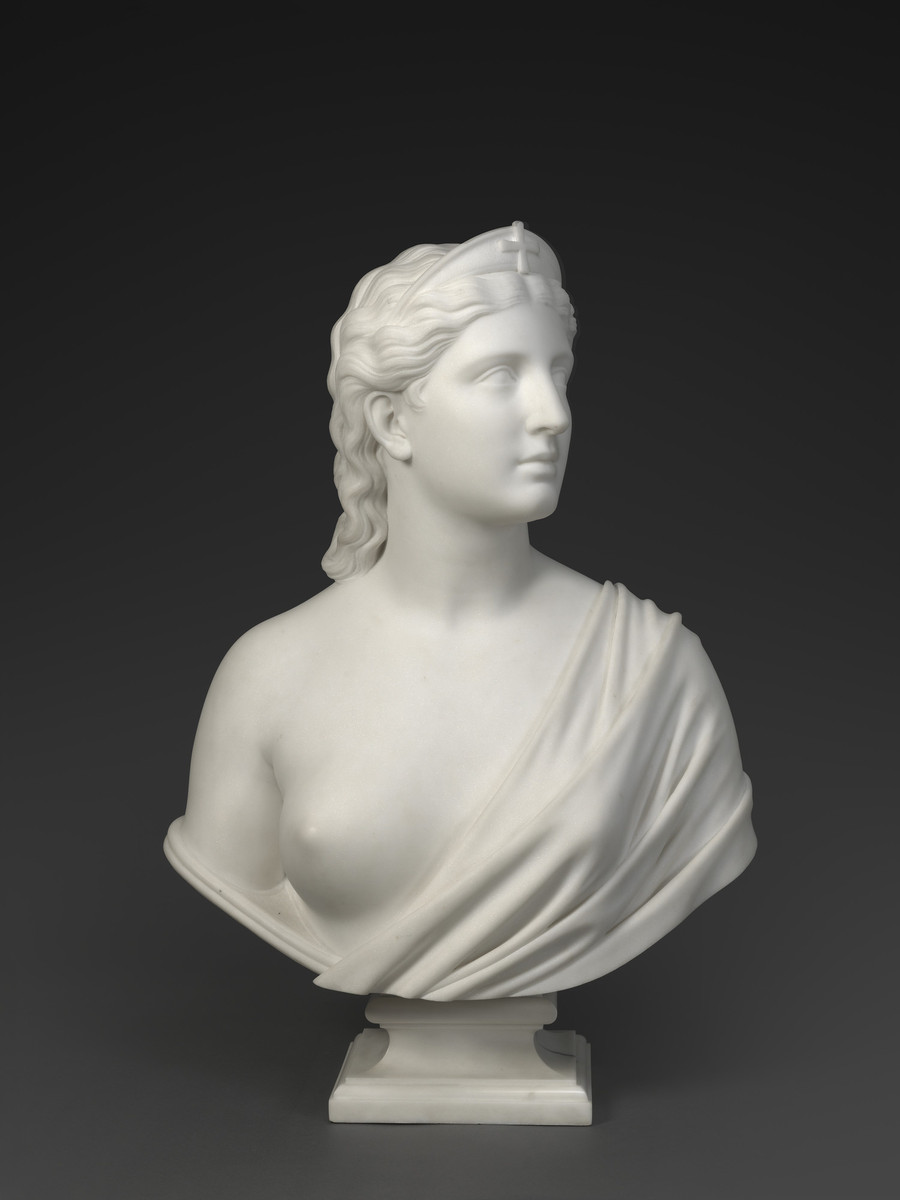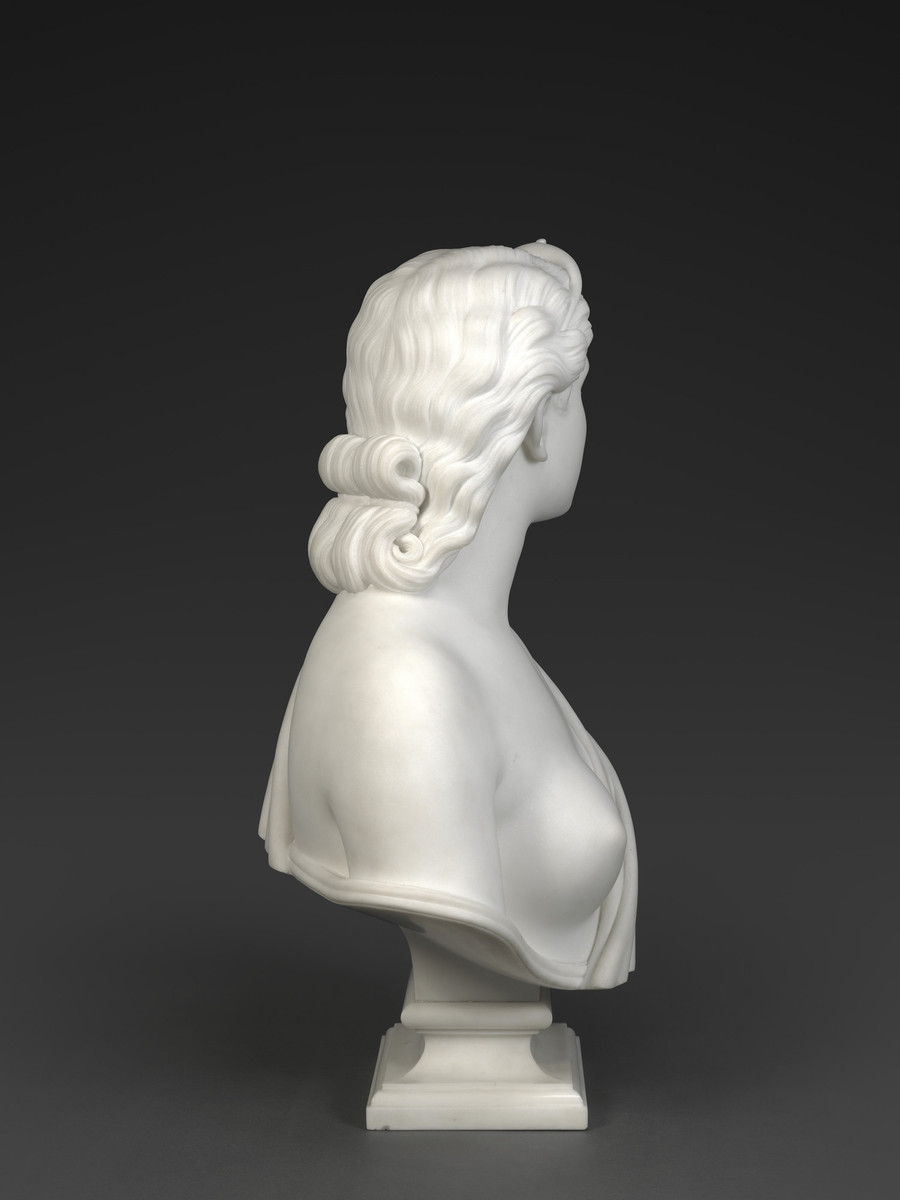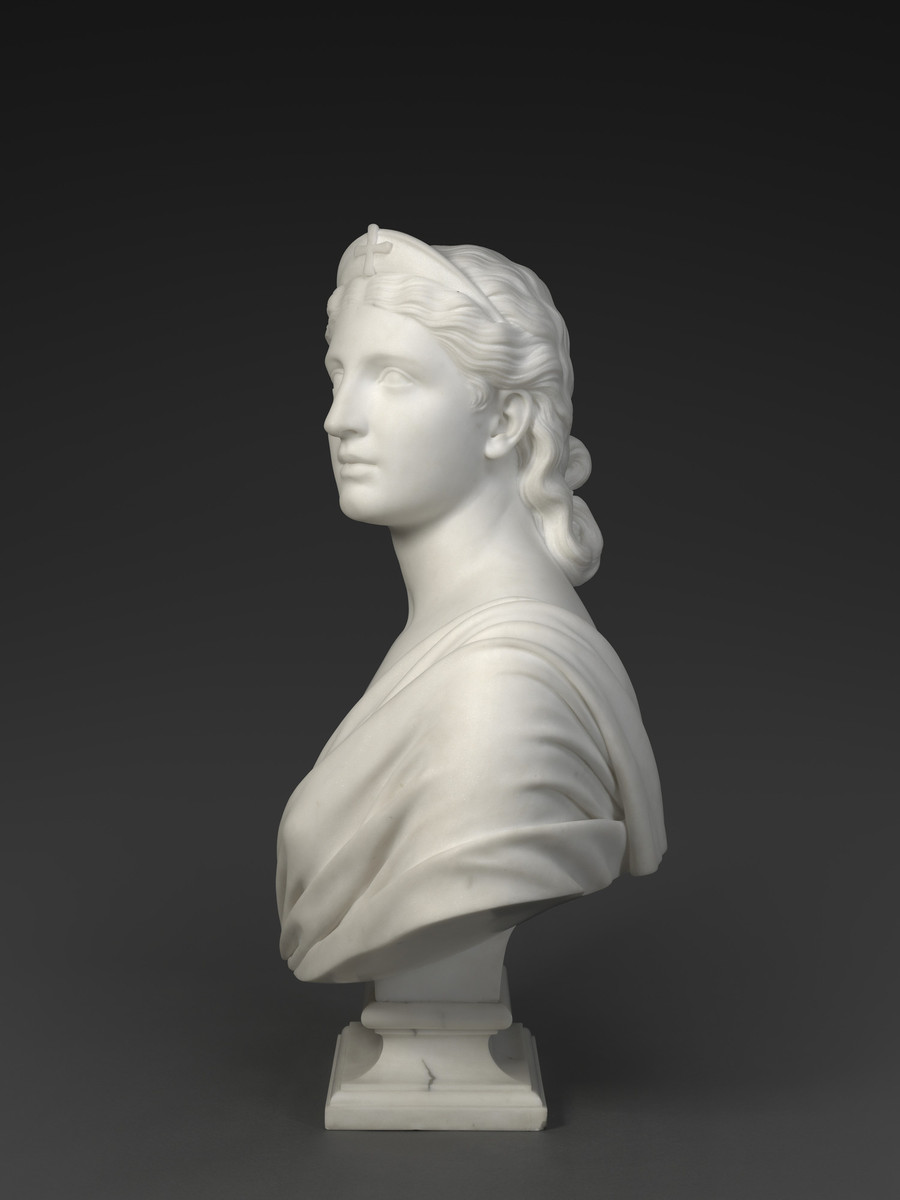Not On View
Powers, Hiram
American (1805-1873)
Place made: Europe; Italy; Florence
Faith, ca. 1870; modeled ca. 1866-1867
Overall: 70.485 cm x 50.8 cm x 30.48 cm; 27 3/4 in x 20 in x 12 in; Base: 9.2075 cm x 20.955 cm x 17.6213 cm; 3 5/8 in x 8 1/4 in x 6 15/16 in
Gift of Mrs. J.T. Herrick
MH 1940.3.I(b).OI

 GIVE
GIVE


